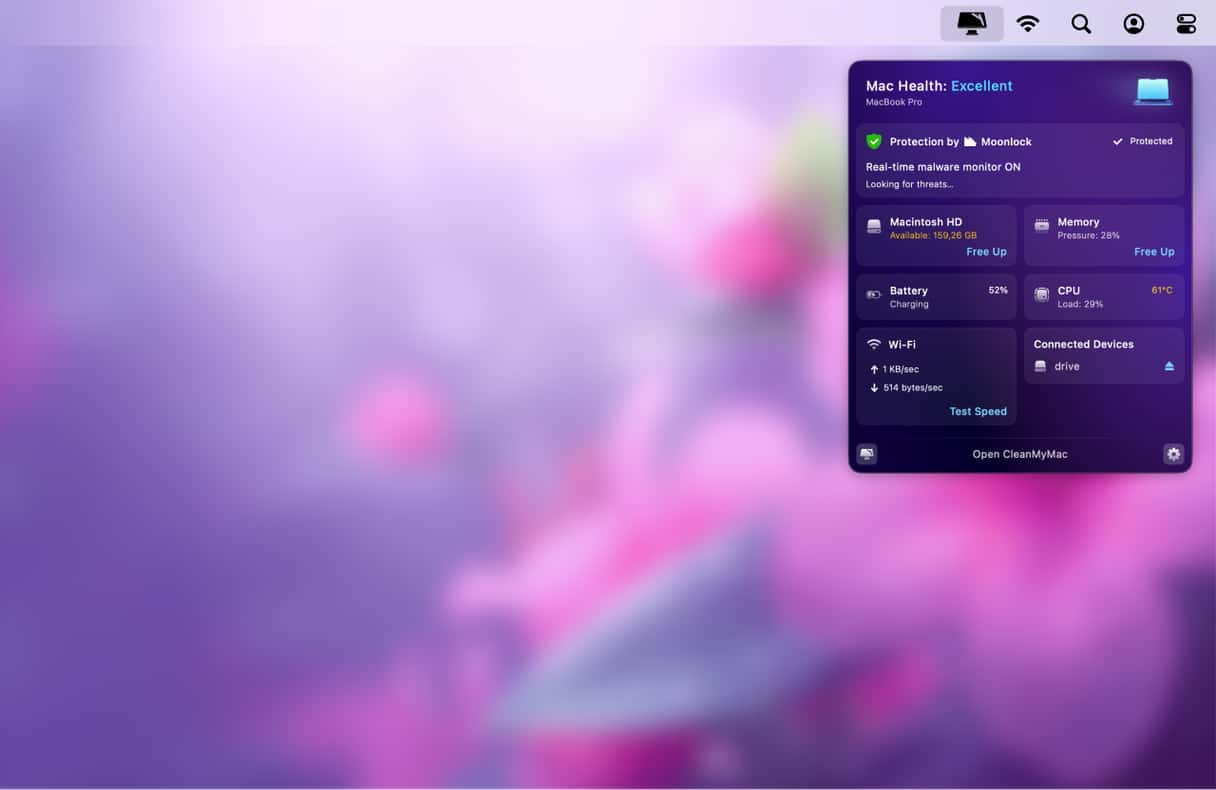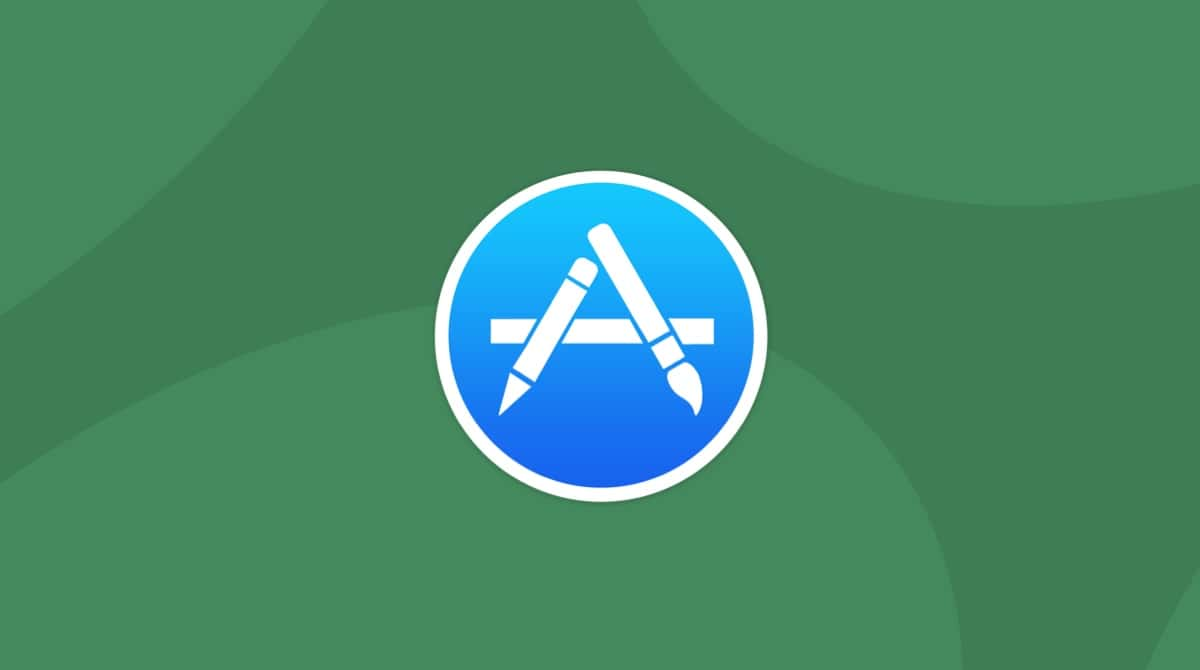We've all seen the spinning beachball appear on our Mac's screen and grow in frustration as we wait for the application that has hung to respond. Sometimes, it doesn't, and we have to resort to force quit to shut it down and start again. But what happens when force quit is not working? We'll answer that question and show you exactly what to do.
Why force quit?
Force quitting an application is a pretty drastic course of action. It tells the app to stop what it's doing immediately and not to display any of the dialogs it might usually show you before it quits. However, it can be useful, despite the risk of losing data, if the app in question hangs and fails to respond for several minutes, especially if it causes the rest of your Mac to hang or even just slow down.
How do you force quit?
There are several different ways to force quit an application.
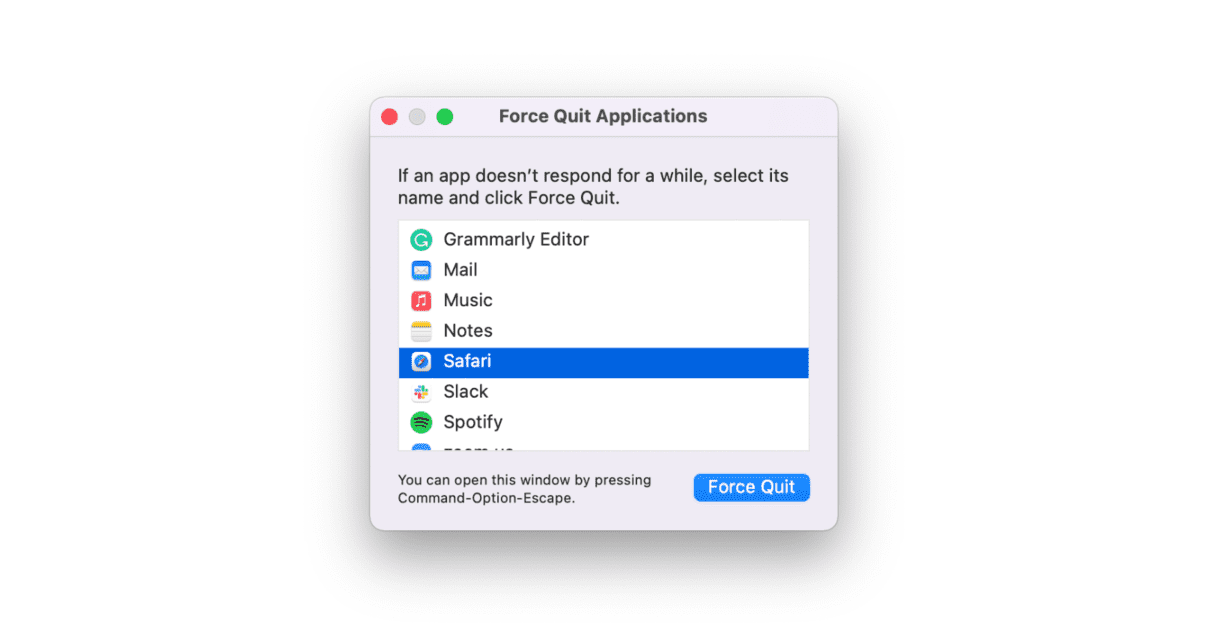
- Press Command-Option-Escape, select the app from the box that opens, and click Force Quit.
- If you can access the Apple menu, click it, choose Force Quit, select the app, and click Force Quit.
- Right-click or Control-click on the app's icon in the Dock and choose Force Quit.
Try to force quit it from the Dock
If you hold down Option and click on an app in the Dock, you will see an extra option for Force Quit. See if that one works: hold down the Option key and right-click the app's icon. Here, click Force Quit.

What to do when an application won't force quit
Sometimes, none of the options above works, and the app carries on hanging. Don't worry; there are other things you can try.
1. Use Activity Monitor
Activity Monitor is designed to allow you to monitor the performance of processes on your Mac. However, it can also quit those processes and force quit the apps running them.
- Go to Applications > Utilities and double-click Activity Monitor to open it.
- Click the CPU column header to order processes according to the CPU cycles they are using.
- The process causing the application to hang will probably be at or near the top. Select it, then click "X" to quit.

- In the window that appears, click Force Quit.
2. Use CleanMyMac
If you don't already have CleanMyMac installed on your Mac, get your free trial here. We’re going to use the CleanMyMac Menu to force-quit any app, so before we dive in, enable the Menu in the app’s settings: with CleanMyMac open, press Command-Comma > Menu > Enable Menu.
- Open the CleanMyMac Menu from the menu bar.
- Click the Memory pane.
- If a misbehaving app appears in the top consumers, click Quit.
- Go back and click CPU.
- Look through the top consumers list and quit the problematic app.
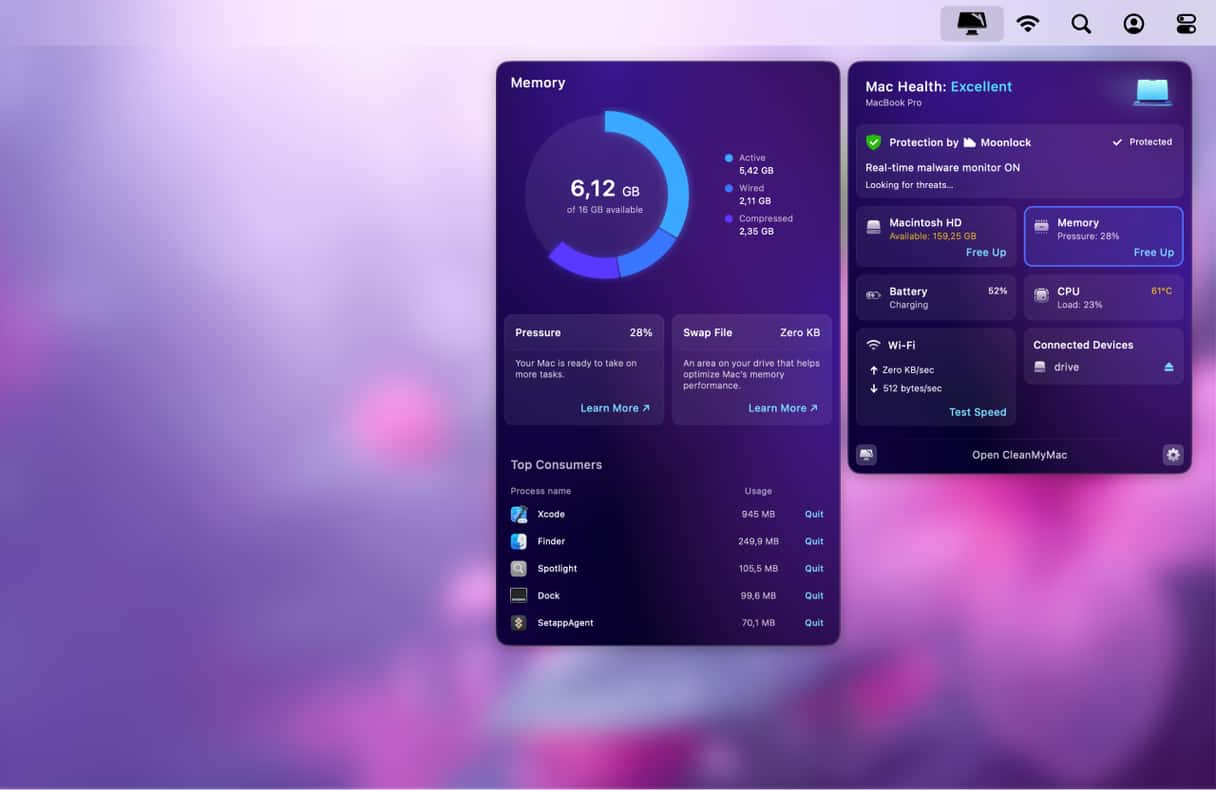
3. Disable Launch Agents
Many processes displayed by Force Quit are performed by a class of applications called Launch Agents. It could be an automatic app updater that works invisibly in the background. The same tool we've just described has a sub-menu called Launch Agents (see the screenshot above). It will force quit the unwanted launch agents — when the regular Force Quit doesn't work.
4. Use Terminal
If, for some reason, Activity Monitor doesn't do the job or you can't open it, try using Terminal instead.
- Go to Applications > Utilities and double-click Terminal to open it.
- Type:
ps -ax - Press Return.
- You will now see a list of running apps and processes in the Terminal window. Locate the application you want to force quit. Its row will start /Applications/.
- Note the number on the far left of the row — that's the PID.
- Type:
kill [PID]and replace [PID] with the number you noted in step 5. - Press Return.
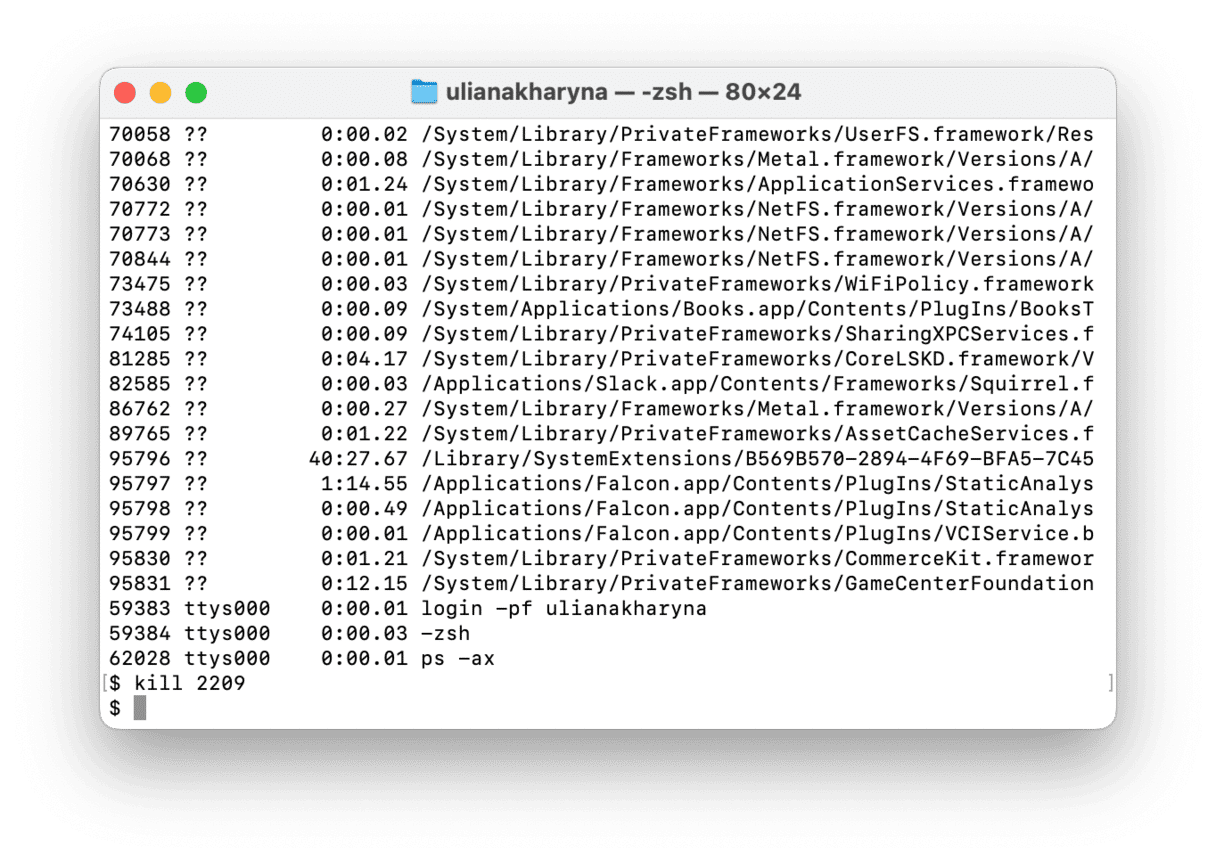
5. Restart your Mac
If none of the methods described above works and the application won't quit, you may need to restart your Mac. Normally, we'd tell you to click on the Apple menu and choose Restart.
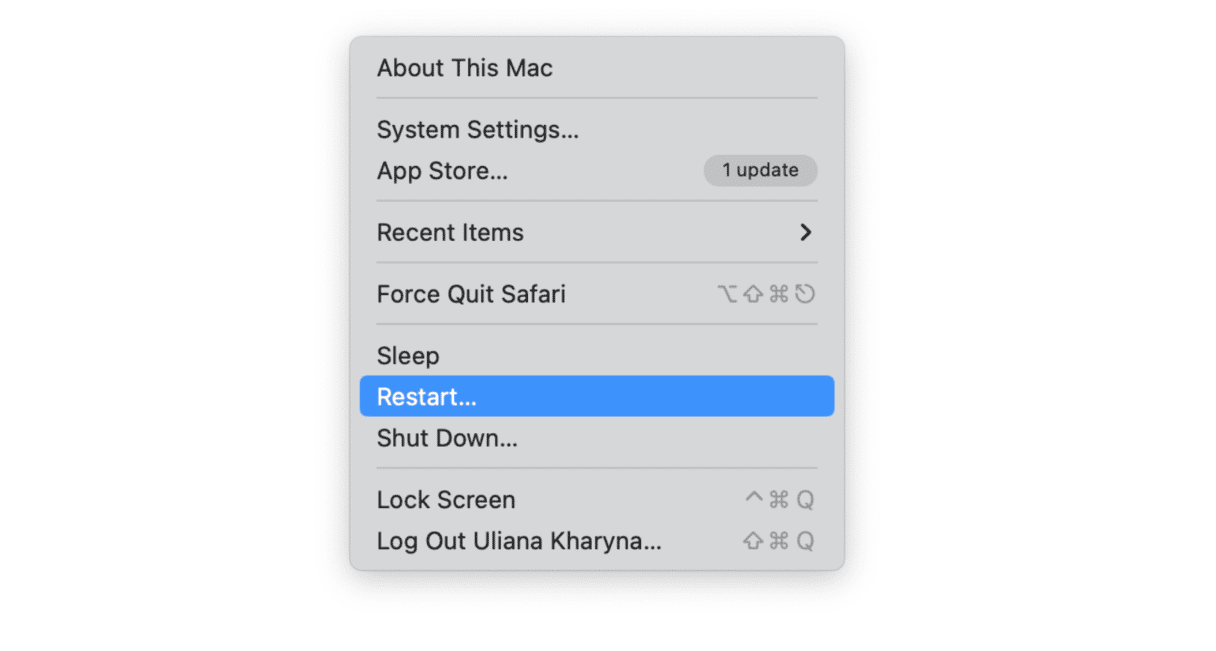
But if a misbehaving app won't force quit, chances are that it has grabbed most of the resources on your Mac and caused it to beachball, meaning you can't click on the Apple menu. So here's what to do.
- Press and hold the power button (if you have a MacBook with a Touch Bar, it's the Touch ID button).
- Wait until you see the Apple logo on the screen.
- Release the power button and wait for your Mac to restart.
6. Check for an update to the misbehaving app
The first thing you should do after you restart is to try and figure out why the application was misbehaving. And the first step in that process is to check to see if you're running the latest version.
If the app was downloaded from the App Store, you could check it there. If not, clicking on the [APP NAME] menu will typically display an option to check for updates.

However, there is an even easier way. CleanMyMac allows you, with a couple of clicks, to check for updates for multiple apps simultaneously and then update them with another click.
- Choose Applications in the sidebar.
- Run a quick scan.
- Update your apps if CleanMyMac finds updates available.
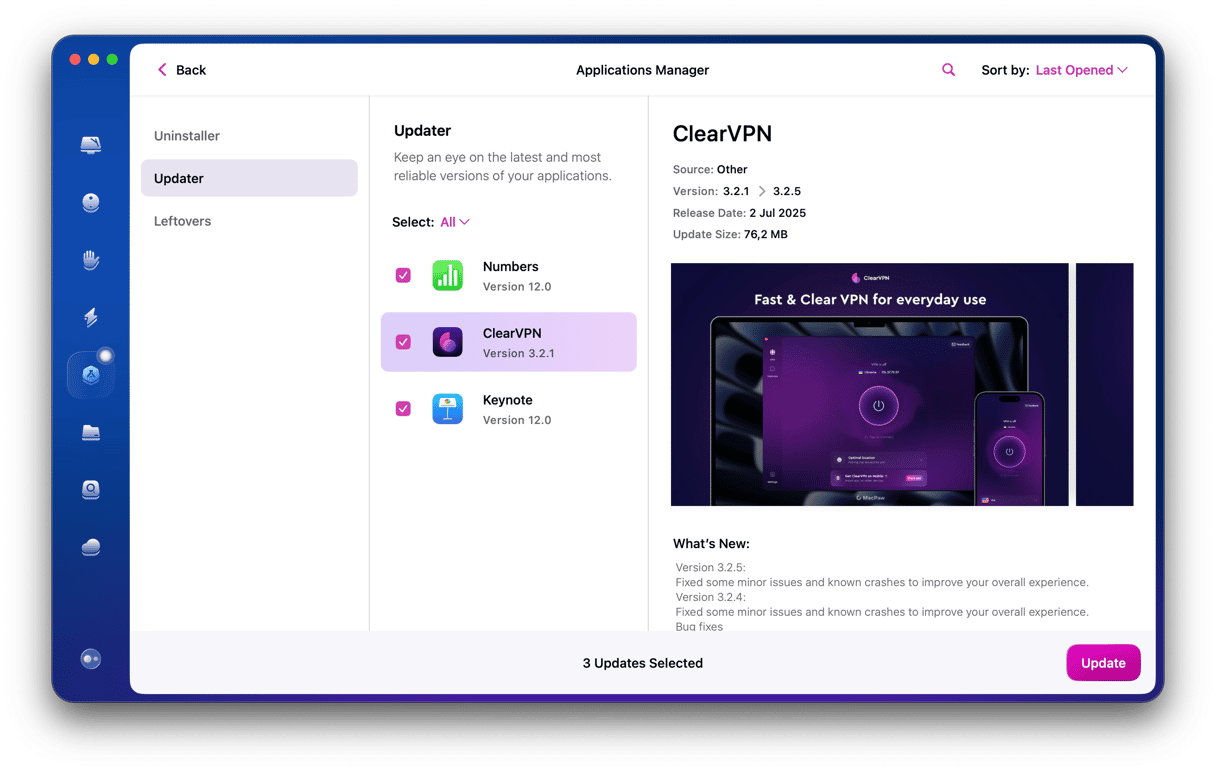
It can be frustrating when an application stops responding or starts beachballing. It's even worse if the app brings your whole Mac to a standstill. However, force quitting the app usually solves the problem. There are several different ways to force quit apps, all of them described above. Try a different method if you think your Mac's force quit isn't working. Use the CleanMyMac Menu and manage all your apps with the Applications feature; you may never need to force quit an app again. And if you do, the methods we've described can help identify the culprit and quit it for you.



